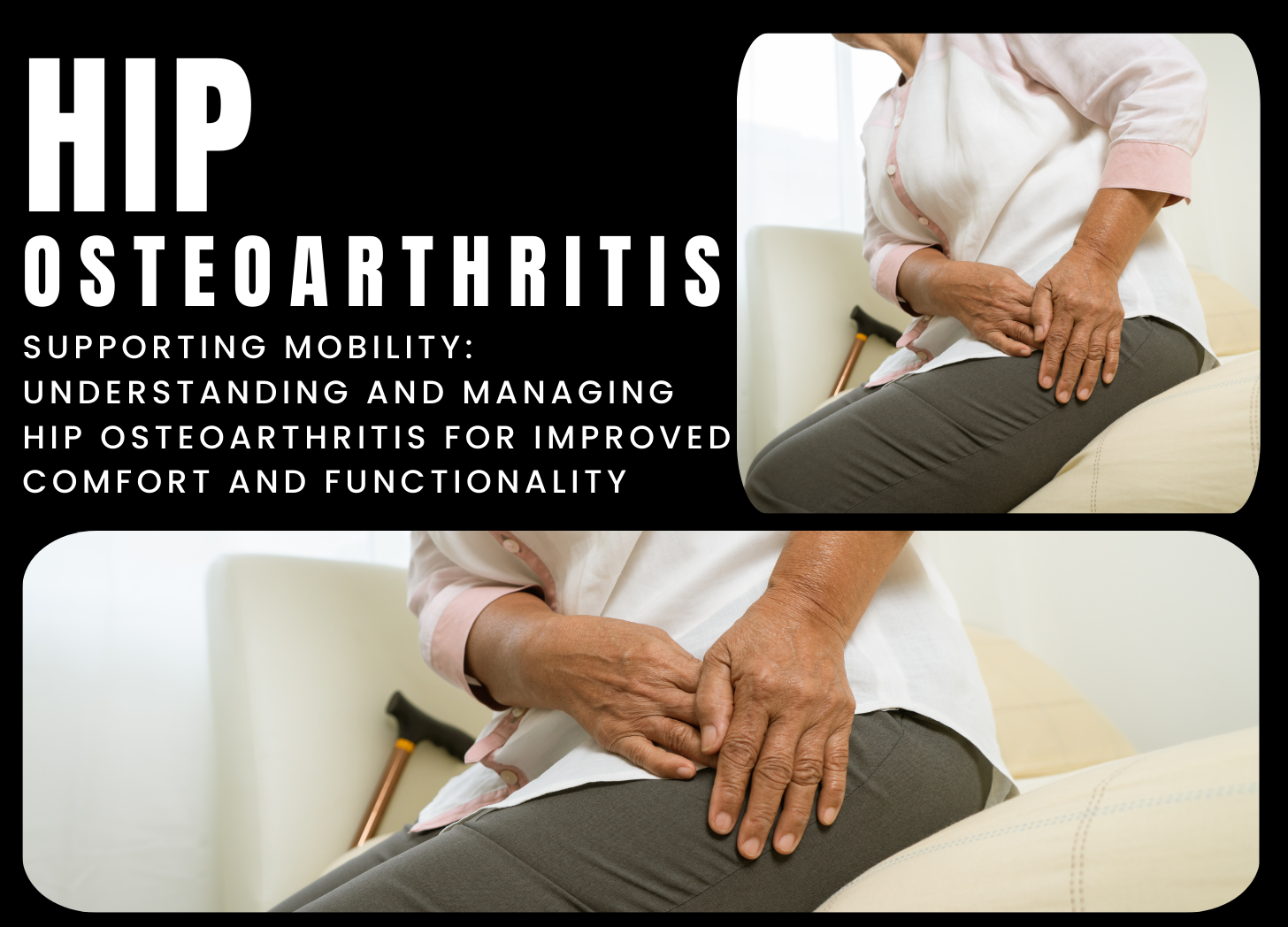Contact Us
Contact Us

Hip osteoarthritis (OA) is a degenerative joint condition that affects the hip joint, causing cartilage degradation and bone deterioration. The hip joint is a ball-and-socket joint, with the rounded head of the femur (thigh bone) fitting into the pelvis’ acetabulum (socket). Cartilage covers the surfaces of the bones, cushioning them and allowing for smooth movement. However, with hip osteoarthritis, this cartilage wears down over time, resulting in discomfort, stiffness, and limited mobility.
Although the actual etiology of hip osteoarthritis is unknown, it is thought to be a mix of variables such as age, genetics, joint structure, and mechanical stress on the hip joint. As people age, their chance of having osteoarthritis rises owing to joint wear and tear over time. Other risk factors for hip osteoarthritis include obesity, previous hip injuries or operations, recurrent stress on the hip joint from activities like running or heavy lifting, and specific medical diseases including rheumatoid arthritis or congenital hip abnormalities.
Hip osteoarthritis symptoms include pain, stiffness, and discomfort in the hip joint, particularly with weight-bearing activities like walking, climbing stairs, or standing up from a seated posture. Hip osteoarthritis can also cause decreased range of motion in the hip joint, difficulty walking or bearing weight on the affected leg, and a sense of weakness or instability in the hip. Hip osteoarthritis symptoms usually develop with time and can have a substantial impact on mobility and quality of life.
Hip osteoarthritis is often diagnosed using a combination of medical history, physical examination, and imaging procedures such as X-rays or magnetic resonance imaging (MRI), which assess the severity of joint deterioration and rule out other potential reasons of hip discomfort. Blood tests may be used to rule out inflammatory types of arthritis, such as rheumatoid arthritis. Early diagnosis and treatment are critical for controlling hip osteoarthritis and avoiding further joint damage.
Treatment for hip osteoarthritis attempts to reduce discomfort, enhance joint function, and decrease disease progression. Conservative treatment options may include lifestyle changes such as weight loss, exercise, and physical therapy to strengthen the muscles surrounding the hip joint and enhance joint stability. Nonsteroidal anti-inflammatory medicines (NSAIDs), corticosteroid injections, and assistive equipment like canes or walkers can all be used to alleviate discomfort and increase movement.
If conservative treatments do not work for severe or refractory hip osteoarthritis, surgical intervention such as hip arthroscopy, hip resurfacing, or complete hip replacement surgery may be considered to reduce pain and restore function. These surgical techniques are designed to improve mobility and quality of life by removing damaged tissue, reshaping the hip joint, or replacing damaged joint surfaces with artificial components.
In conclusion, hip osteoarthritis is a common degenerative joint disease defined by cartilage breakdown in the hip joint, which causes pain, stiffness, and limited mobility. While hip osteoarthritis can be difficult to manage, early detection, conservative therapies, and surgical interventions, where needed, can help ease symptoms and improve quality of life for those affected.
References:
1.Arthritis Foundation. (2022). Osteoarthritis of the Hip. Retrieved from https://www.arthritis.org/diseases/osteoarthritis-of-the-hip
2.Mayo Clinic. (2022). Hip Osteoarthritis. Retrieved from https://www.mayoclinic.org/diseases-conditions/osteoarthritis/symptoms-causes/syc-20351925
Post a Comment